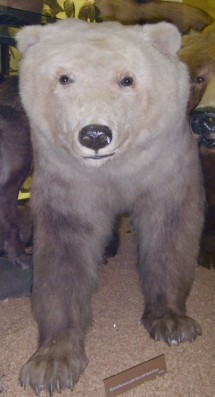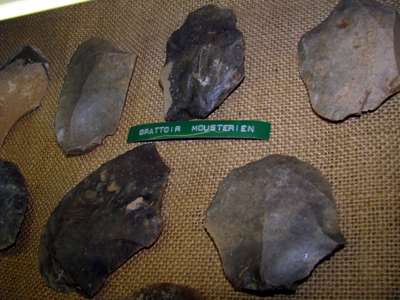 |
| St. Denec menhirs |
From the official site:
The IVth meeting of an international workgroup will gather together, in Rennes, from 10 to 12 May 2012, several of the leading European specialists on the theme of megalithic monuments (about twenty speakers from some ten different nationalities). Following the international colloquium at Bougon (Deux-Sèvres) which was held in 2002 (Joussaume, Laporte, Scarre, 2006), meetings of the European Megalithic Studies Group took place in Göteborg in Sweden ( 2004 ), in Seville in Spain ( 2008 ) and in Kiel in Germany ( 2010 ). This will be the first time for more than thirty years that the city of Rennes will welcome a high-level scientific meeting specifically dedicated to the study of megalithic monuments. It is organized within the framework of a program entitled " Megalithic monuments of the Atlantic zone and beyond " which is supported in particular by the Maison des Sciences de l'Homme de Bretagne. It will comprise two days of oral communications, open to the general public, in the Auditorium of the Museum of Brittany, in Rennes. They will be accompanied by the presentation of posters about current work on megalithic monuments in France, in Europe and in the World.
The program is as follows:
Thursday 10/058h30 – Introduction - Chris Scarre.9h - Mégalithes au centre de la Péninsule Ibérique - Primitiva Bueno Ramirez.9h30 - Building forever or just for the time being? A perspective from NW Iberian mounds - Ramón Fábregas Valcarce.10h – Megalithic architectures of the dolmenic groups of the oriental andévalo (Huelva, spain). Typology, constructive systems and technical traditions - Jose Antonio Linares Catela,10h30 - Coffee Break11h00 – Menga: Biography of an outstanding megalithic monument - Leonardo Garcia Sanjuan, José Antonio Lozano Rodríguez.11h30 - Megalithic Monuments of Northern and Central Portugal. A broad discussion concerning their construction and decoration programs - María de Jesús Sanches, Domingos de Jesus da Cruz.12h00 – Megalithic hollows: rock-cut tombs between the Tagus and the Guadiana - Leonor Rocha, Pedro Alvim.12h30 – Lunch time14h00 – Structural functions and architectural projects within the elongated monuments of Western France - Luc Laporte.14h30 – Traces d'exploitation du schiste de quelques cairns néolithiques du Massif armoricain - Eric Gaumé,15h00 – Poster cession15h30 - Coffee Break16h00 – Megalithic building archaeology in the north-western part of France - Florian Cousseau,16h30 – La file de pierres dressées de Groah Dehn à Hoëdic (Morbihan) : un exemple d’architecture évolutive au 5e-4e millénaire av. J.-C. - Jean-Marc Large, Emmanuel Mens.17h00 – Accident or design? Chambers, cairns and funerary practices in the Neolithic chambered tombs of western Europe - Chris Scarre.17h30/18h00 – A northern point of view: synthesis and debate - Chairman - Gabriel Cooney, Torben Dehn,Friday 11/059h00 – Economic Impact of the Megalithic Constructions: the Oceanic Case - Nicolas Cauwe.9h30 - Beyond the individual monument: New Results from the Priority Program "Early Monumentality and Social Differentiation" - Martin Hinz.10h00 - A monumental task: building the Neolithic megaliths of Britain and Ireland - Vicki Cummings, Colin Richards.10h30 - Coffee Break11h00 – Making megalithic monuments: the role of small things - Gabriel Cooney,11h30 – Building Boom to Bust: A proposed sequence of construction for the Knowth passage tomb cemetery - Kerri Cleary.12h00 - Going through the motions: using phenomenology and 3-D modelling techniques to explore the reality of construction at Knowth , Co. Meath - Eimear Meegan.12h30 – Lunch time14h00 - 25 years among Neolithic builders - Torben Dehn.14h30 – The clustering of megalithic monuments around the causewayed enclosures at Sarup on Funen, Denmark - Niels H. Andersen.15h00 – Dolmens without mounds in Denmark - Jørgen Westphal.15h30 - Coffee Break16h00 - In the Eye of the Beholder - Palle Eriksen.16h30 - Lønt: Two types of megaliths and one oddball - Anne Birgitte Gebauer.17h00 – A southern point of view: synthesis and debate - Chairman - Primitiva Bueno Ramirez, Luc Laporte.17h30/ 18h00 – Conclusion of the meetingSaturday 12/05Excursion reserved to the communicators
 |
| Monument of Carn |
More information at the official site.
See also the many ESMG videos, specially if you are interested but can't go.
Hat tip to Pileta.




















